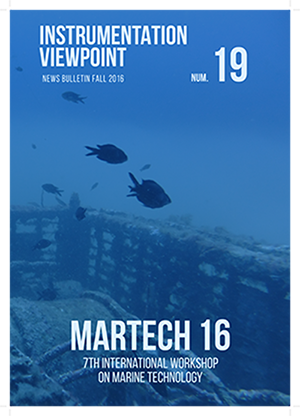Electronic system for drift clock calculation and synchronization for seafloor observatory
Abstract
The paper describes a new electronic device that allows an easily measurement of the drift between a reference time source (usually GPS) and an atomic rubidium clock which is normally used in seafloor observatories. The Rubidium clock is used in autonomous seafloor observatories to supply reference time for data acquisition with the precision of milliseconds. During the deployment of seafloor observatory the clock is synchronized with GPS. It is critical to evaluate the time drift between the clock and the GPS, when the observatory is recovered. In fact, thanks to an accurate drift measurement it’s possible to have a correct timestamp for data series collected by seafloor observatory’s instruments. The device described in this paper is composed by an Arduino mega shield integrated with other electronic circuits. The device is easily customizable for different clocks in fact Arduino IDE allows development of the desired features for the rubidium clock used in the specific application.Downloads
Issue
Section
License
Universitat Politècnica de Catalunya has joined the Berlin Declaration on Open Access to Knowledge in the Sciences and Humanities. This declaration proposes the universal acces to the results of scientific and technical research.
All papers presented at Martech will be published in both the UPCommons and the Martech organization web sites, the former being the institutional digital deposit of Universitat Politècnica de Catalunya (https://upcommons.upc.edu). This difussion will be made through the Creative Commons License Attribution-NonCommercial-NoDerivs 2.5 or similar (http://creativecommons.org/licenses/by-nc-nd/2.5/deed.en).
When sending the final paper, the author must agree to the conference having non-exclusive rights on this operation. The author will maintain his/her right to diffuse the paper elsewhere.







